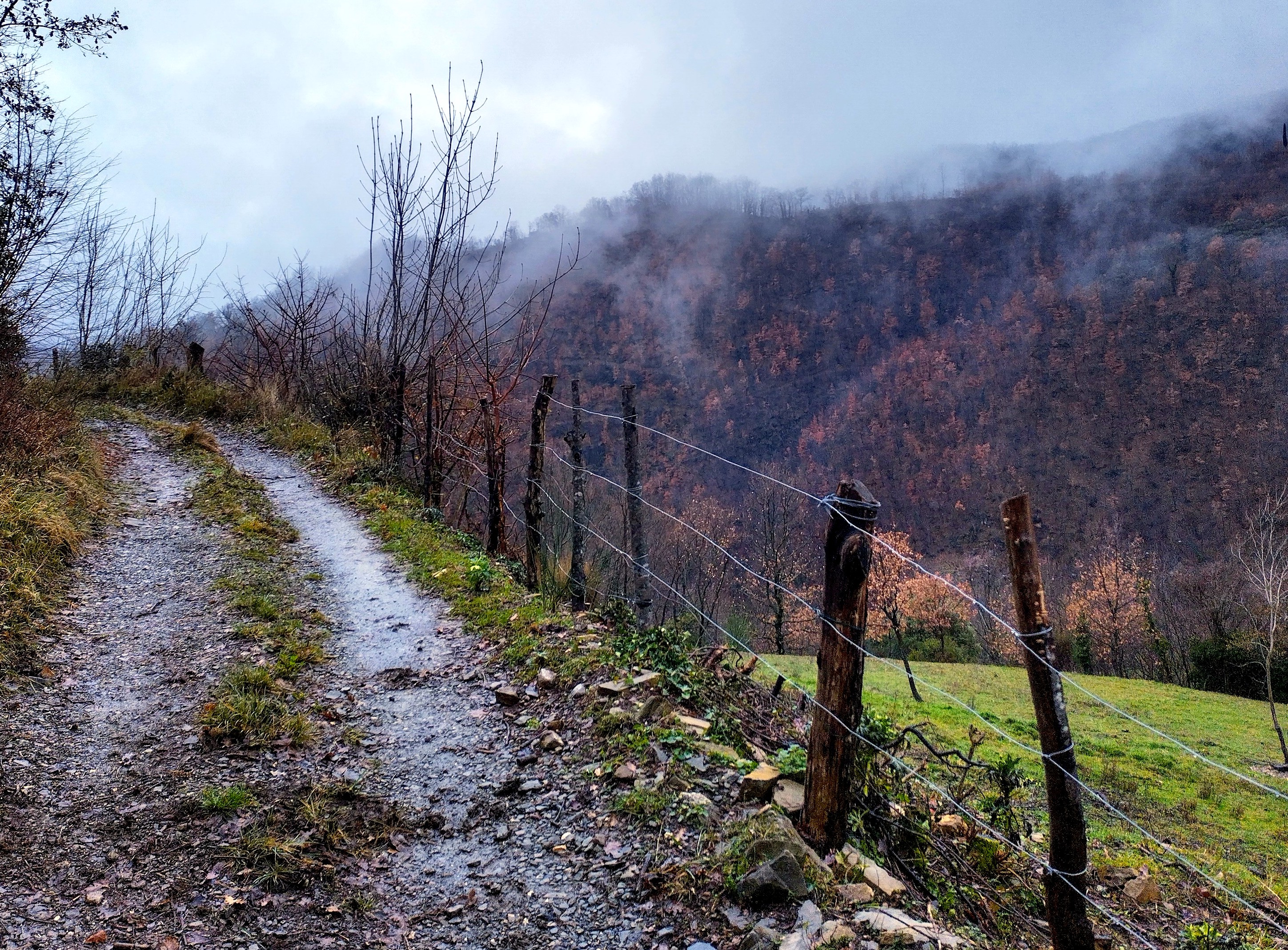HTML and CSS in the Apennines
 The Apuan Alps, snowy in January, which were visible from the quiet Apennine ridge where I first started working on this website.
January 2023. I thought I had found the perfect place to build my website. A friend let me look after his villa, high up in the chestnut woods of the Tuscan Apennines. My only responsibility was to clear some bamboo—vai tranquillo!
The Apuan Alps, snowy in January, which were visible from the quiet Apennine ridge where I first started working on this website.
January 2023. I thought I had found the perfect place to build my website. A friend let me look after his villa, high up in the chestnut woods of the Tuscan Apennines. My only responsibility was to clear some bamboo—vai tranquillo!
It wasn’t so perfect. Winter is cold in the Italian mountains. I depended on one small, capricious log stove. I huddled close to it and wore all my layers. I learnt that it is impossible to write code whilst wearing gloves. The only things that kept me warm was regular bamboo-eradication sessions. Google wasn’t encouraging: “one of the toughest things to do in the garden”—“long and laborious”—“a nightmare”—but slowly I got the hang of a mattock. My web development skills were growing too. I taught myself HTML, CSS, PHP, SQL and JavaScript.
The goals and the tools
I wanted my website to resemble a nicely-typeset book, with 66 letters per line, proper paragraph indentation, pretty fonts, and pictures in the margins. With this in mind, formatting from Tufte-CSS was the ideal starting point. As I wanted to control these fine details, I wrote the pages from scratch. Working on my laptop, I used the ultimate text editor: Vim. To avoid repeated code, I wrote a Python script to assemble the pages from Jinja templates. Templating also made it easier to make this website fully bilingual (every page is in both English and Spanish).
I don’t recommend my approach to anybody. It’s taken hundreds of hours to build this shaky little site, hours which I could have spent hiking! The website probably has many issues (please contact me if you spot one). Anybody could have learned to build a website much faster using a “content management system” such as WordPress, or blogging tool such as Substack. However, I have felt a few benefits of doing it myself. The tools I’ve used are free of cost, and free in spirit: my codes, pages, and data belong only to me, not any corporation.
 Walking through the winter countryside of Tuscany.
The last and most important benefit is that I’ve learnt a lot about how websites work. Although a blog post lacks the romance of an old printed book, it is still a form of expression. In fact, a good travel post is a gesamtkunstwerk, combining the arts of writing, photography, typography, graphic design, and cartography. It can be interactive, and it can reach millions of people. So, learning to build a website is just as worthwhile as learning to paint or carpenter.
Walking through the winter countryside of Tuscany.
The last and most important benefit is that I’ve learnt a lot about how websites work. Although a blog post lacks the romance of an old printed book, it is still a form of expression. In fact, a good travel post is a gesamtkunstwerk, combining the arts of writing, photography, typography, graphic design, and cartography. It can be interactive, and it can reach millions of people. So, learning to build a website is just as worthwhile as learning to paint or carpenter.
 The Apuan Alps, snowy in January, which were visible from the quiet Apennine ridge where I first started working on this website.
January 2023. I thought I had found the perfect place to build my website. A friend let me look after his villa, high up in the chestnut woods of the Tuscan Apennines. My only responsibility was to clear some bamboo—vai tranquillo!
The Apuan Alps, snowy in January, which were visible from the quiet Apennine ridge where I first started working on this website.
January 2023. I thought I had found the perfect place to build my website. A friend let me look after his villa, high up in the chestnut woods of the Tuscan Apennines. My only responsibility was to clear some bamboo—vai tranquillo!